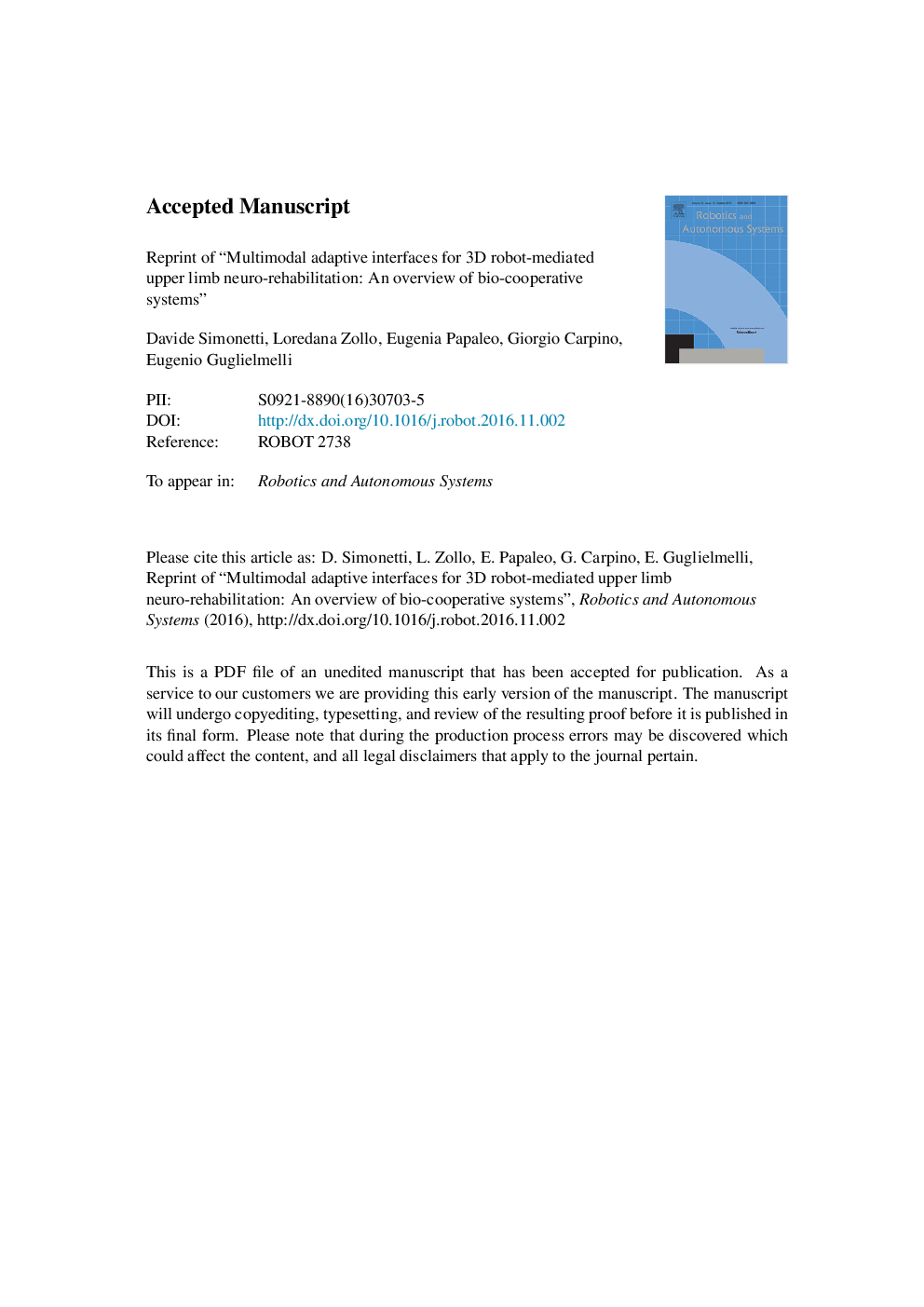| کد مقاله | کد نشریه | سال انتشار | مقاله انگلیسی | نسخه تمام متن |
|---|---|---|---|---|
| 4948818 | 1439852 | 2017 | 19 صفحه PDF | دانلود رایگان |
عنوان انگلیسی مقاله ISI
Reprint of “Multimodal adaptive interfaces for 3D robot-mediated upper limb neuro-rehabilitation: An overview of bio-cooperative systems”
ترجمه فارسی عنوان
بازنویسی یک واسط انطباق چندجملهای برای رباتهای سهبعدی نیمه بازو ناباروری: بازبینی سیستمهای زیستی تعاونی
دانلود مقاله + سفارش ترجمه
دانلود مقاله ISI انگلیسی
رایگان برای ایرانیان
کلمات کلیدی
موضوعات مرتبط
مهندسی و علوم پایه
مهندسی کامپیوتر
هوش مصنوعی
چکیده انگلیسی
Robot-mediated neuro-rehabilitation has been proved to be an effective therapeutic approach for upper limb motor recovery after stroke, though its actual potential when compared to other conventional approaches has still to be fully demonstrated. Most of the proposed solutions use a planar workspace. One key aspect for influencing motor recovery mechanisms, such as neuroplasticity and the level of motivation and involvement of the patient in the exercise, is the design of patient-tailored protocols and on-line adaptation of the assistance provided by the robotic agent to the patient performance. Also, when abilities for performing activities of daily living shall be targeted, exercises in 3D workspace are highly preferable. This paper wants to provide a complete overview on bio-cooperative systems on neuro-rehabilitation, with a special focus on 3D multimodal adaptive interfaces, by partly in-depth reviewing the literature and partly proposing an illustrative case of how to build such a bio-cooperative based on the authors' current research. It consists of an operational robotic platform for 3D upper limb robot-aided rehabilitation, directly derived from the MAAT system previously developed by the same research group. The system features on-line adaptation of therapy characteristics to specific patient needs and to the measured level of performance, by including the patient in the control loop. The system is composed of a 7-DoF robot arm, an adaptive interaction control system, a motorized arm-weight support system and a module for on-line evaluation of patient performance. Such module records patient biomechanical data through an unobtrusive, wearable sensory system, evaluates patient biomechanical state and updates robot control parameters for modifying level of assistance and task complexity in the 3D workspace. In addition, a multimodal interface provides information needed to control the motorized arm-weight support by means of a dedicated cable-pulley system.
ناشر
Database: Elsevier - ScienceDirect (ساینس دایرکت)
Journal: Robotics and Autonomous Systems - Volume 90, April 2017, Pages 86-96
Journal: Robotics and Autonomous Systems - Volume 90, April 2017, Pages 86-96
نویسندگان
Davide Simonetti, Loredana Zollo, Eugenia Papaleo, Giorgio Carpino, Eugenio Guglielmelli,
